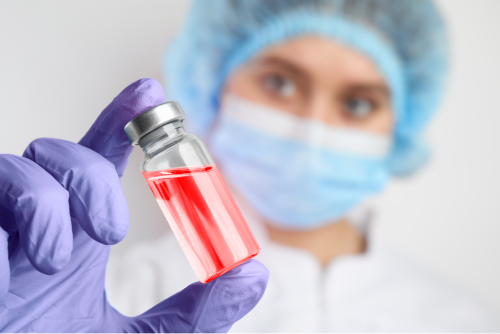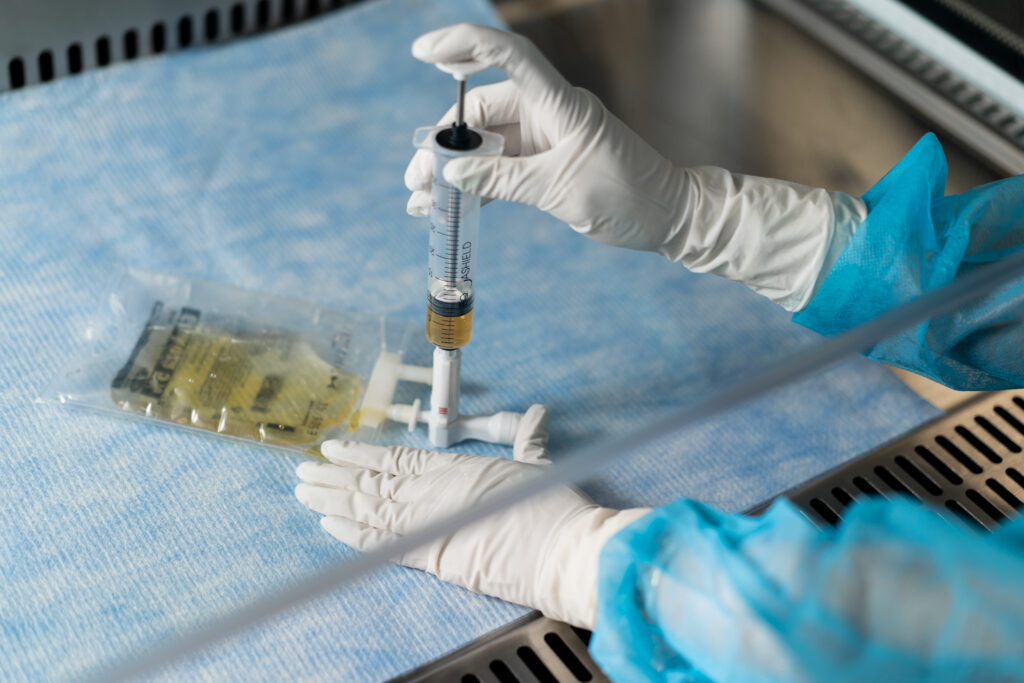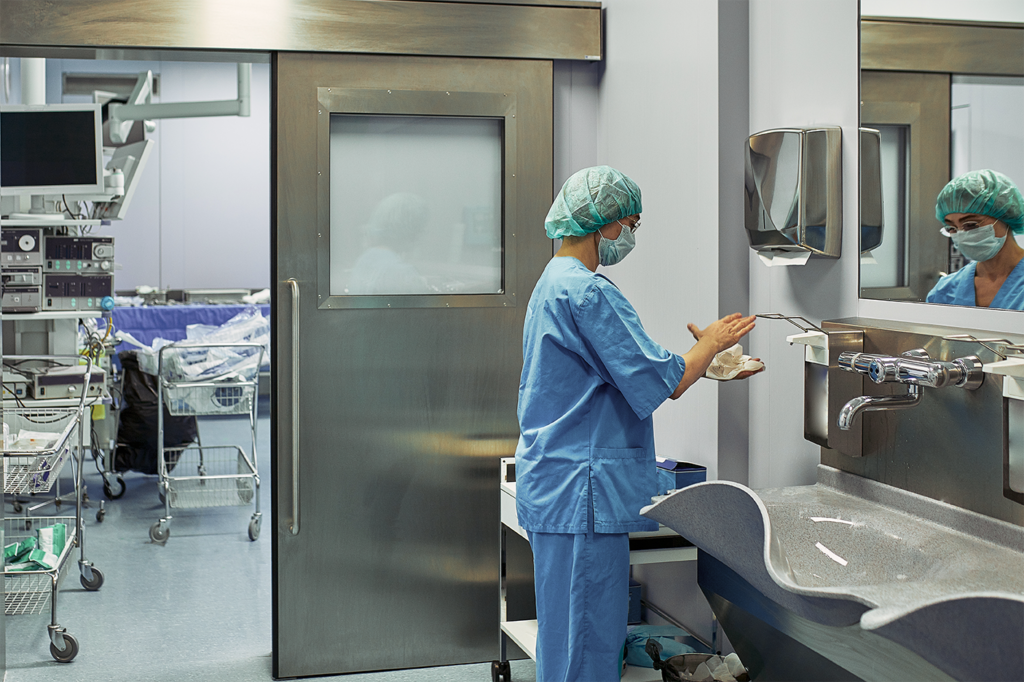The Critical Role of Advanced Technologies in Minimizing Risks from Hazardous Drug Handling
The preparation and administration of hazardous drugs, particularly chemotherapy agents, present significant contamination risks. These processes put both healthcare staff and patients in contact with dangerous chemicals, potentially leading to serious health issues such as dermatological problems (e.g., rashes and hypersensitivity reactions), reproductive disorders, and chronic conditions. The threat of liver damage from prolonged exposure highlights once more the necessity for comprehensive health monitoring and the implementation of protective strategies.
The National Institute for Occupational Safety and Health NIOSH emphasises managing these risks to ensure high levels of occupational safety in pharmacies, compounding centres, and other healthcare facilities. Studies published in Springer and the Oncology Nursing Society’s journal have shown the adverse effects of hazardous drugs not only on individuals but also on the workplace environment, advocating for strict contamination control measures. This includes using closed-system transfer devices and automation solutions to mitigate occupational exposure to these environmental contaminants.
Several case studies illustrate the effectiveness of such modern technologies in improving safety levels in pharmacies and hospitals. These real-life examples highlight the practical advantages and challenges of implementing CSTDs, offering a deeper understanding of their critical role in safeguarding healthcare communities and environments.
Mitigating Hazardous Drug Surface Contamination: Evaluating the Efficacy of Standardized Cleaning and Closed System Transfer Devices
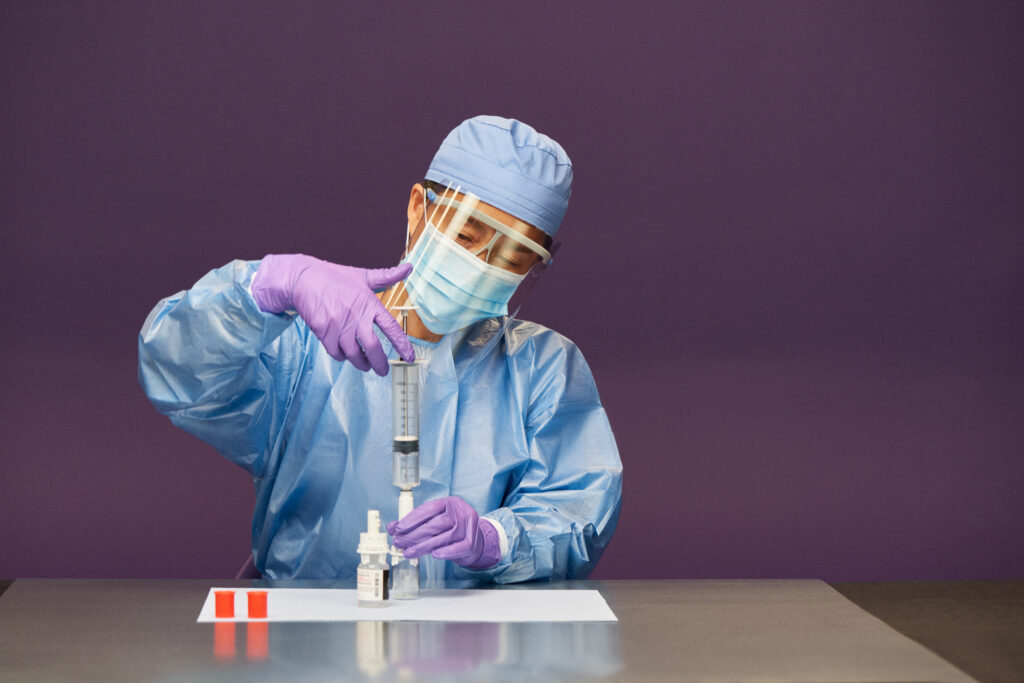
A study assessed the reduction of hazardous drug surface contamination in pharmacy compounding and administration areas through standardised cleaning workflows and closed system transfer devices. It aimed to mitigate the risks hazardous drugs pose to healthcare workers and patients by comparing the effectiveness of these interventions. The research focused on evaluating contamination levels post-implementation of enhanced cleaning protocols alongside CSTD utilisation.
Methodology
Conducted across six different areas within pharmacy and nursing departments, the procedure involved the collection and analysis of 90 individual samples for five commonly compounded hazardous drugs over initial phase, 3-month, and 6-month intervals. The assessment utilised a rigorous testing protocol to measure the presence of hazardous drug residues on surfaces.
Results
The findings demonstrate that through standardised cleaning protocols and the integration of CSTDs, healthcare facilities can significantly reduce the risk of exposure to hazardous drugs. This comprehensive evaluation across multiple time points and locations revealed no detectable residue in all 90 samples analysed, highlighting the critical role of meticulous cleaning processes and the employment of secondary engineering controls like CSTDs in maintaining a safer work environment.
Conclusions
The study supports the adoption of standardised cleaning protocols and closed system transfer devices as effective strategies for maintaining low levels of surface contamination. By demonstrating the effectiveness of these strategies, the study offers valuable insights for healthcare facilities aiming to enhance occupational safety and patient care standards.
Assessing the Performance of Closed System Drug-Transfer Devices in Vapor Containment
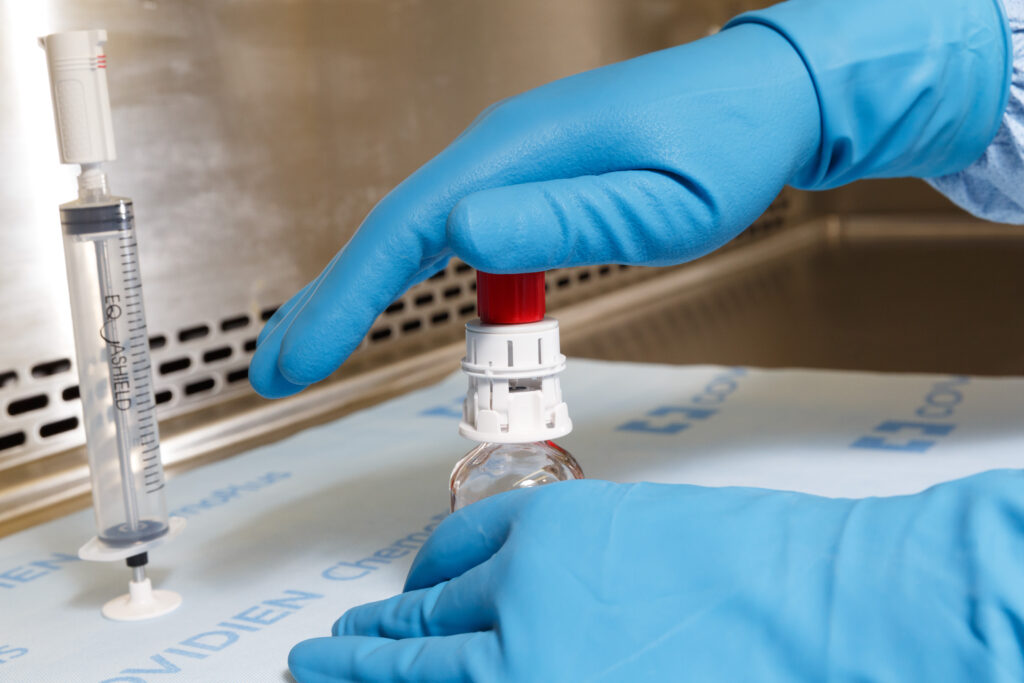
An independent study evaluated the vapour containment performance of six commercially available closed-system drug transfer devices against the draft vapour protocol released by NIOSH. This research aimed to quantitatively assess the effectiveness of these CSTDs in containing gas/vapour within a controlled test environment. Utilizing 70% isopropyl alcohol (IPA) as a challenge agent, the study simulated drug compounding and administration processes, measuring IPA vapour concentrations that escaped the devices.
Methodology
The methodology closely adhered to the NIOSH draft protocol, incorporating two specific tasks outlined by NIOSH, with additional steps included to thoroughly evaluate the devices. Each device underwent these tasks ten times to ensure a comprehensive assessment.
Results
The results revealed a significant variance in performance among the tested closed system transfer devices: only three devices managed to maintain IPA vapour release below the 1.0 ppm threshold defined by NIOSH for successful containment across all tasks. Notably, the Equashield device demonstrated superior performance, consistently maintaining vapour release levels well below the 1.0 ppm threshold, affirming its efficacy as a truly closed system under the robust vapour challenge posed by the study.
Conclusions
This study contributes to the safety and efficacy discourse of CSTDs in healthcare settings, suggesting that future testing and protocol adjustments consider these devices’ operational realities. By demonstrating that only half of the evaluated closed-system drug transfer devices met NIOSH’s quantifiable performance threshold, the research highlights the need for healthcare facilities to critically assess CSTD technology choices. The standout performance of the Equashield device underscores its effectiveness in protecting healthcare workers from hazardous drug exposure, making it a noteworthy option for facilities prioritising safety and efficiency in drug handling processes.
Evaluating Vapor Containment Efficacy of CSTDs
Another study evaluated the vapour containment capabilities of CSTDs utilizing various containment technologies. Conducted in partnership with the Health and Safety Laboratory (HSL) in Buxton, UK, the research aimed at reviewing the draft protocol proposed by NIOSH for CSTD evaluation. The study compared the effectiveness of devices employing physical barriers against those using air-cleaning technology in containing hazardous drug vapours.
Methodology
The methodology replicated the NIOSH test protocol within a specially constructed environmental test chamber, incorporating both the original protocol instructions and the device manufacturers’ instructions for use (IFU). The evaluation involved simulated pharmacy manipulations, including drug reconstitution and IV bag preparation, using a surrogate mixture to challenge the systems. Vapour release was measured using advanced detection technologies, providing a comprehensive analysis of each system’s containment performance.
Results
The study highlighted differences in vapour containment among the tested devices, indicating that adherence to manufacturer-specific IFUs is crucial for maintaining the integrity of CSTD operation and ensuring an accurate assessment of vapour containment efficacy.
Conclusions
This study contributes valuable insights into the safety protocols necessary for handling hazardous drugs in healthcare settings, aiming to enhance worker protection against potential drug vapour exposure.
Assessing Syringe Plunger Contamination in Hazardous Drug Handling: A Comparative Analysis of Closed System Transfer Devices
In a comparative analysis, researchers examined cyclophosphamide contamination on syringe plungers using different CSTDs in oncological compounding. The study compared the performance of Becton Dickinson’s syringe plungers with Phaseal™ CSTDs against those from Equashield™, assessing their ability to minimize hazardous drug exposure during chemotherapy preparation and administration.
Methodology
Utilizing the ChemoGlo™ sampling kit for precise analysis, the study tested cyclophosphamide contamination levels on syringe plungers after conducting multiple drug transfer cycles within a Forma Class II, 2A Biological Safety Cabinet. The syringes were categorised into three groups, each subjected to a set number of drug transfer cycles to simulate varying degrees of usage intensity.
Results
The findings revealed significant contamination levels exceeding 2000 ng when used with Phaseal™ CSTDs, highlighting a potential risk of hazardous drug exposure. Conversely, Equashield™ syringes demonstrated no detectable contamination, underscoring their superior capability in preventing drug leakage and ensuring a safer oncology compounding environment.
Conclusions
This comparative study underscores the critical importance of employing effective CSTDs to safeguard healthcare workers from exposure to hazardous drugs during chemotherapy preparation and administration. The superior performance of Equashield™ syringes in maintaining a contamination-free compounding process emphasises the need for adopting advanced CSTDs in oncology practices.
Assessing the Impact of Closed System Drug Transfer Devices on Antineoplastic Drug Safety in Healthcare Settings
A comprehensive study critically examined the effectiveness of CSTDs, specifically TexiumTM/SmartSiteTM and Equashield® II, in minimizing leakage and contamination during the compounding of antineoplastic drugs in a centralized cytotoxic drug preparation unit. The primary aim of this research was to assess the capability of these leading CSTDs to reduce occupational exposure to hazardous drugs, with a particular focus on gemcitabine (GEM), by preventing leaks and spills during the drug preparation and administration process.
Methodology
The research involved a detailed analysis of wipe and pad samples collected from inside and outside the drug preparation area over five years. The focus was on detecting GEM contamination to evaluate the sealing efficiency of the CSTDs used.
Results
Findings indicated a significant reduction in GEM contamination with the adoption of Equashield® II, demonstrating its superior ability to prevent drug leakage and ensure a safer working environment.
Conclusions
This investigation highlights the critical role of CSTDs in safeguarding healthcare workers from exposure to hazardous antineoplastic drugs. The Equashield® II system, in particular, was shown to be highly effective in eliminating risks of spills and leaks.
Evaluating Efficiency, Ease of Use, and Cost of Closed System Transfer Devices for Chemotherapy Administration in Veterinary Oncology
This study assessed the treatment time, ease of use, and associated costs of administering chemotherapy using CSTDs versus traditional methods in a veterinary setting. The primary goal was to evaluate the operational efficiency, user experience, and financial considerations of two prominent CSTDs, Equashield™ and PhaSeal®, compared to conventional chemotherapy administration methods.
Methodology
The study employed a prospective experimental simulation approach, engaging veterinary technicians from oncology speciality practices.
Results
The investigation revealed that Equashield™ facilitated the fastest administration times and was also found to be easier to use than PhaSeal® and the no-CSTD approach.
Conclusions
This research underscores the importance of integrating CSTDs into veterinary oncology to safeguard healthcare workers without detracting from treatment efficacy.
Improving Safety in Hazardous Drug Handling: Recommendations for Healthcare Facilities and Compounding Centres

- Adopting closed system transfer devices (CSTDs) is recommended to reduce contamination risks. CSTDs have proven effective in maintaining a safer working environment by significantly lowering the risk of exposure to hazardous drugs.
- Facilities are encouraged to evaluate and select CSTDs based on their proven performance in vapour containment and their ability to prevent drug leakage and syringe plunger contamination.
- Furthermore, the implementation of standardised cleaning protocols alongside the use of CSTDs is crucial. Rigorous, consistent cleaning methods have been shown to effectively eliminate hazardous drug residues on surfaces, further safeguarding healthcare personnel and patients.
- Healthcare facilities should adopt a comprehensive approach that includes both technological solutions like CSTDs and enhanced cleaning workflows to ensure the highest levels of safety.
- Training and education on the correct use of CSTDs and adherence to cleaning protocols are essential for healthcare workers. Regular competency assessments and ongoing education on handling hazardous drugs should be instituted.
- Evaluating the efficacy of CSTDs and cleaning protocols should be an ongoing process. Healthcare facilities are advised to conduct periodic reviews and assessments of their hazardous drug handling practices.
- Finally, the financial aspect of adopting CSTDs should be considered, with an emphasis on cost-effectiveness without compromising safety. The studies suggest that while initial investments may be required, the long-term benefits justify the expenditure. Healthcare facilities should explore various CSTD options, considering both upfront costs and long-term savings in terms of improved occupational safety and health outcomes.
By adhering to these recommendations, healthcare facilities and compounding centres can significantly enhance the safety of their environments, protecting both their workers and patients from the risks associated with handling hazardous drugs.

